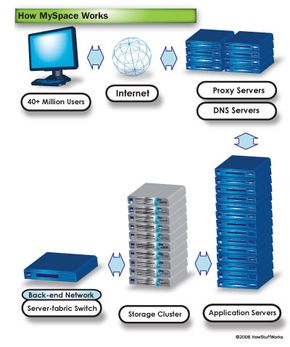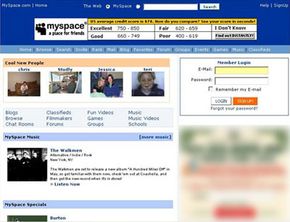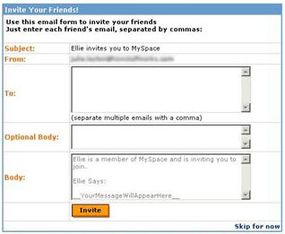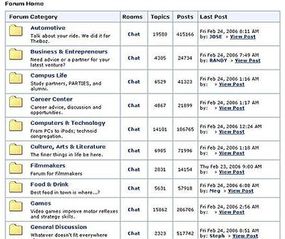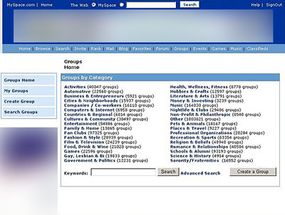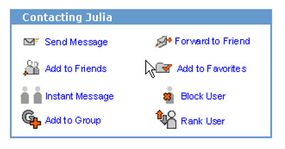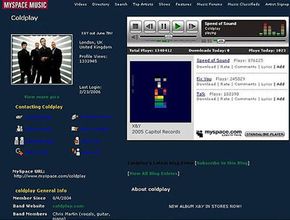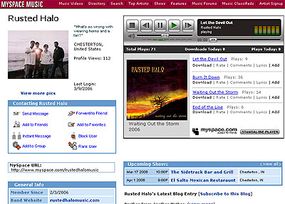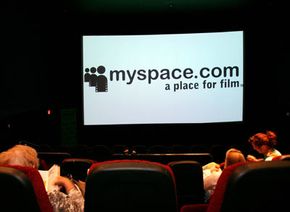The idea isn't new: "Social networking" has been around forever. It's the simple act of expanding the number of people you know by meeting your friends' friends, their friends' friends and their friends' friends' friends. And MySpace isn't the first (or the last) Web site to take the concept online. So why does MySpace have more than twice the traffic of Google within four years of its 2003 launch?
Fifty-four million people have profiles on MySpace as of February 2006, and 180,000 more register to use the site every day. By all accounts, it's a phenomenon. Some people call it dumb luck, some call it brilliant and a few call it a sexual predator's dream come true. In this article, we'll find out what MySpace really is, what it can do for you, how it blew past the competition and why Rupert Murdoch thought it was worth $580 million.
Advertisement
On MySpace, your social network starts growing from day one without much effort on your part. That's part of the draw. Basic MySpace networking works something like this:
- You join MySpace and create a profile.
- You invite your friends to join MySpace and search MySpace for your friends who are already members. These people become part of your initial "Friend Space."
- All of the people in your friends' Friend Space become part of your network. You now have connections to more people than you did 15 minutes ago.
From what the author can tell, there's no way to actually view your Extended Network in any collective way. But this is the idea:
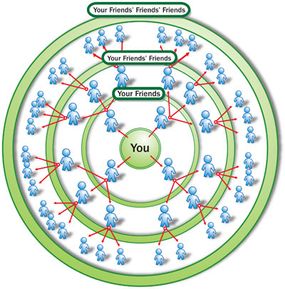
Now, technically, everyone on MySpace is in your Extended Network, because when you create a profile, MySpace co-founder Tom Anderson is automatically added to your Friend Space. We're all connected through Tom. To explore your Extended Network, you can go to one of your friends' profiles, see who's in his Friend Space, click on a picture to visit one of those people's profiles, see who's in that person's Friend Space and work your way down the line. (It's definitely not the easiest way to play the Kevin Bacon game once you take Tom out of the equation.) You can request to add anyone to your Friend Space, and if your invitation is accepted, you can send that person e-mail, instant messages, links to a band you discovered in MySpace Music and anything else you might share with your friends.
There's a lot more to MySpace than networking, but that's the core concept. The big question is why MySpace has succeeded where so many others have failed. Lots of people expound on this mystery from a business or philosophical perspective, but there are at least a few obvious answers. First and possibly foremost, there's the music connection. See the next page to learn more.
Advertisement

